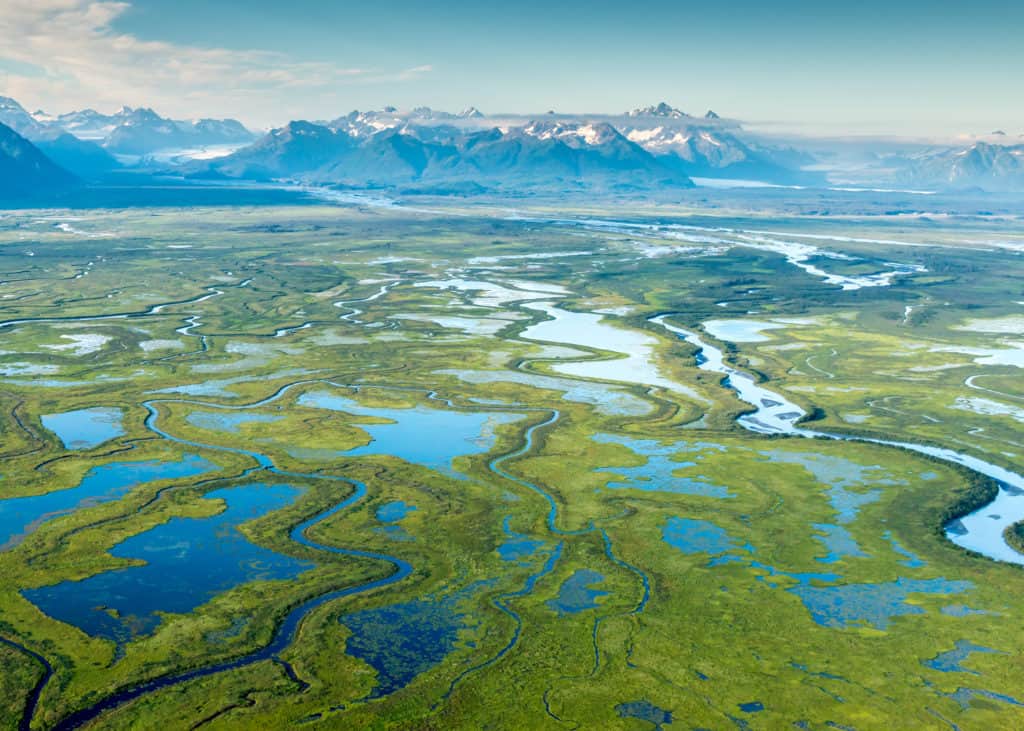About Cordova
Cordova is a community on Prince William Sound in the Gulf of Alaska. The town sits on Orca Inlet, in the southeastern portion of the Sound. With Eyak Mountain rising above the town, Cordova is surrounded by untamed wilderness and naturally protected waters. It lies 52 air miles southeast of Valdez and 150 miles southeast of Anchorage. The area encompasses 61.4 square miles of land and 14.3 square miles of water.

History
The area has historically been home to the Eyak, Chugach Region People, Tlingit, and Athabaskan who are organized together as a federally recognized tribe. The Native Village of Eyak continues to govern and protect the health, safety and welfare of its’ tribal members, as well as support the revitalization of their traditional languages and culture. Orca Inlet was originally named “Puerto Cordova” by Don Salvador Fidalgo in 1790. Michael Heney, builder of the Copper River and Northwestern Railroad, gave Cordova its present name in 1906, and the city was formed in 1909.
One of the first producing oilfields in Alaska was discovered in 1902 at Katalla, 47 miles southeast of Cordova. The Katalla oil field produced until 1933, when it was destroyed by fire. Cordova served as the railroad terminus and ocean shipping port for copper ore from the Kennecott Mine up the Copper River. The first trainload of ore was loaded onto the steamship “Northwestern,” bound for a smelter in Tacoma, Washington, in April 1911. The Bonanza-Kennecott Mines operated until 1938 and yielded over $200 million in copper, silver, and gold. Fishing became the economic base in the early 1940s.
Current Population: 2,316
Incorporation: Home Rule City
Location: 60.542780N -145.757500W in the Valdez-Cordova Census Area
School District: Cordova City School District
Transportation
Cordova is accessible by plane or boat. The Merle K. “Mudhole” Smith Airport at mile 13 is state-owned and operated, with a 7,500′ long asphalt runway and a 1,899′ long gravel crosswind runway. Jet service is scheduled daily; air taxi and cargo services are available. Cordova Municipal Airport, state-owned and city-operated, has a 1,800′ gravel runway. Float planes land at the Lake Eyak seaplane base or the small boat harbor.
The Alaska Marine Highway System provides scheduled ferry service, connecting Cordova with the communities of Whittier (gateway to Anchorage), Valdez, Tatitlek, and Chenega. Barge service to Cordova is year-round.
Local roads are maintained by the State Department of Transportation and the City Public Works Department. A 48-mile gravel road (Copper River Highway) provides access to the Copper River Delta to the east, although due to recent flood damage, the road cannot be traveled to its terminus at the historic Million Dollar Bridge.
Cordova is linked directly to the North Pacific Ocean shipping lanes through the Gulf of Alaska and received year-round barge service.
Climate
Cordova rests in a temperate rain forest; average annual precipitation is 167 inches and average annual snowfall, 80 inches. Winter temperatures average 20 degrees Fahrenheit. Summer averages 55 degrees Fahrenheit.
Economy
Cordova supports a large fishing fleet for Prince William Sound and several fish processing plants. Copper River red salmon, pink salmon, herring, halibut, and other types of fish are harvested.
In 2011, nearly 400 residents held commercial fishing permits, and nearly half of all households have someone working in the industry – either harvesting or processing. The number increases even more if one also considers residents employed in seafood marketing and watershed protection.
The largest employers in Cordova are Trident Seafoods, Inc, Cordova School District, Cordova Community Medical Center, the City, and Alaska Department of Transportation. The U.S. Coast Guard maintains an Air Support Facility 13 miles out of town adjacent to Mudhole Smith Airport, and the U.S.C.G. buoy tender Sycamore is home ported in Cordova. The U.S. Forest Service also has personnel in Cordova.

